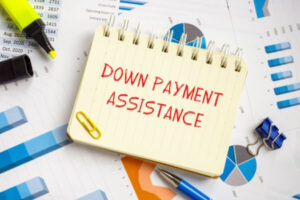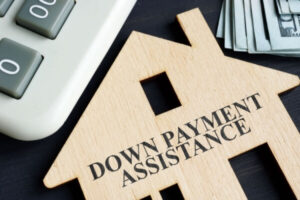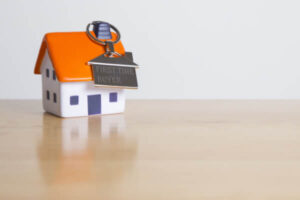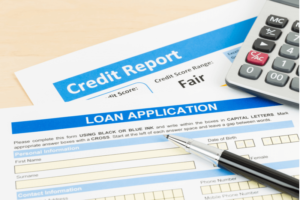One of the major barriers to buying a home for first-time homebuyers is coming up with a down payment, the money you pay up front when you close on a home.
There are many down payment assistance programs offered by the government and private entities for first-time homebuyers, some that don’t require a down payment. That said, a low down payment can come with financial drawbacks like higher monthly payments and less equity in the home.
A down payment is a percentage of the cost of the home and is determined by the lender. Lenders require a down payment because it reduces their risk and also shows the buyer is serious about the purchase. Down payments also help buyers by reducing the amount they borrow and giving them equity in the home.
While many people assume they must come up with a 20% down payment, the average down payment on a house by a first-time buyer in the U.S. in 2023 was 8%, according to the National Association of Realtors. Second-time buyers paid an average of 19%.
There is no required minimum down payment for a house by a first-time home buyer, and how much you should put down on a house as a first-time buyer depends on your financial situation.
Let’s take a look at down payments for first-time homebuyers, down payment assistance programs, pros and cons of making the minimum down payment and how to save for a down payment. Understanding how it all works is the first step to owning your own home.
Down Payment Requirements for First-Time Home Buyers
The amount of down payment you will be required to make varies, depending on the cost of the home and payment program you use. It is safe to say that the more money you can put down on a home purchase, the better. A large down payment reduces your monthly payment, your interest rate and you’ll have more equity in the home.
On the other hand, the down payment isn’t the only cost to consider when you close on a home. Closing costs and moving expenses can add up, which means that you’ll need a bundle of cash when you go to sign the papers. Those other costs can make coming up with $25,000, a 10% down payment on a $250,000 home, seem like an impossible goal. Coming up with more than that? Forget it.
Fortunately, particularly with home prices skyrocketing, 10% isn’t expected by most lenders. The 8% average down payment in 2023 was the highest since 1997, when it was 9%. That said, even 8% can seem out of reach for many first-time homebuyers.
Down payment requirements, whether they’re through an assistance program or come from a lender, start with a buyer’s ability to pay. The lower your credit score and the more debt-to-income you have, the higher the down payment requirement will be because the lender is taking more risk.
Down payment assistance programs may be more forgiving on credit scores but come with their own set of requirements unique to each program. Requirements that most down payment assistance programs have include:
- The purchase must be the buyer’s primary home.
- It must be the buyer’s first home, though some programs consider anyone who hasn’t owned a home in three years a first-time buyer.
- Buyers must take a homebuying course, which covers topics like costs, budgeting, how to save money and how to find the right home.
If you’re getting a conventional mortgage, the down payment requirement is determined by the lender, so it’s a good idea to shop around for a lender who can work with your financial situation. The lower your credit score, and the higher debt-to-income ratio, the higher your down payment requirement will likely be (as well as the interest rate for your mortgage).
If you’re getting a VA or USDA loan, which require no down payment, the lender determines the credit score requirement, as well as the maximum loan you qualify for.
Government programs like FHA (Federal Housing Administration), VA (U.S. Department of Veterans Affairs) and USDA (U.S. Department of Agriculture), as well as nonprofit programs like NACA (Neighborhood Assistance Corporation of America), have requirements unique to the programs. For FHA and NACA mortgages, this includes a requirement that the home price not be above a certain amount, which varies depending on the area.
Here’s a look at down payment requirements for different types of mortgages:
| Mortgage Type | Minimum Down Payment | Minimum Credit Score | Maximum Home Price |
|---|---|---|---|
| Conventional | 3% | 620 or higher, depending on the lender | Up to lender |
| FHA | 3.5%-10% | 580-plus (3.5%) 500-579 (10%) | $498,257-$1.1 million, depending on region |
| VA | 0% | 620 (up to lender) | Up to lender |
| USDA | 0% | 620 (up to lender) | Up to lender |
| NACA | 0% | None | $548,250-$822,375, depending on region |
Down Payment Assistance Programs
Down payment assistance programs for first-time homebuyers come in different forms. The most common are:
- Grants: Money that you are given and don’t have to pay back.
- Matched savings: Grants that match money you’ve already saved for a down payment.
- Loans: Either low or no-interest, that cover a down payment.
Grant and matched savings programs are ideal, because it’s money that you won’t have to pay back. If you are considering a loan program from a private or for-profit entity, research it carefully to make sure it is legitimate and won’t end up costing you more money than it is worth. Some mortgage lenders will not allow a home buyer to use a loan as a down payment, so make sure your down payment assistance and mortgage are a good fit before committing to anything.
The most well-known down payment assistance programs are through the federal government and aimed at low to moderate-income first-time buyers, veterans, and people who live in certain areas of the U.S., where buying a home may be more difficult.
Freddie Mac, the Federal Home Loan Assistance Corp., launched DPA One in 2023 which lists hundreds of down payment assistance programs and how buyers can hook up with them.
Another good place to find information about down payment assistance is from your state’s housing authority or agency, which administers federal Department of Housing and Urban Development programs. HUD provides a link to every state and territory’s housing authority home buying programs, at hud.gov/buying/localbuying.
If you have a relationship with a local bank or credit union, that’s another good source of information. Make an appointment with your lender and talk to them in person about your options. They’ll be happy to discuss it with you, even if you’re not ready to apply for a mortgage.
Let’s take a look at some of the most common down payment assistance programs for first-time homebuyers.
FHA Down Payment Assistance
FHA mortgage loans have low down payment requirements, but don’t come with down payment assistance. They can, however, be combined with a down payment program for first-time buyers. The best place to find information is through your local housing authority or agency.
State Housing Down Payment Assistance
Many states have down payment assistant programs administered through the housing authority or agency and funded through HUD’s HOME Investment Partnership program, or other federal grants. Alabama’s Step Up program, for example, provides a 10-year second mortgage as a down payment. Maine’s First Home Loan program offers a $10,000 grant to those who are the first in their family to buy a home and are former foster children, and a $5,000 grant to low-income first-time home buyers. Check to see what your state offers through your local housing authority.
VA Down Payment Assistance
Veterans and active-duty military members can qualify for a VA mortgage loan, which comes with no down payment. The VA backs the loan, which is provided by a lender. The VA has qualifying requirements related to military service, and lenders require a minimum credit score, usually 620 or higher, to qualify. To find out more, visit benefits.va.gov/homeloans.
USDA Down Payment Assistance
USDA loans come with no down payment, but like VA loans, are through lenders who have credit score and other requirements. To be eligible, a buyer must be below a certain income and live in areas of the country considered rural or suburban by the USDA. To find out more, visit rd.usda.gov/programs.
NACA Down Payment Assistance
The Neighborhood Assistance Corporation of America offers home loans with no down payment or closing costs to buyers whose income is less than 100% of the median for their Metropolitan Statistical Area (MSA), and for any income level buying a home in a U.S. Census Tract area where the median income is less than 100% of the MSA median. NACA requires borrowers to become members, for $25 a year, and that the mortgage-holder remains in the home for the life of the mortgage. Visit naca.com.
Habitat for Humanity Down Payment Assistance
Habitat for Humanity builds and renovates homes for low to moderate-income buyers who need safe, affordable housing. In most cases, Habitat does not require a down payment, but does require that the homeowner provide “sweat equity,” helping with the project. The buyer must also be able to demonstrate that they can pay the mortgage on the house. To learn more, visit habitat.org/housing.
Family and Friends Down Payment Assistance
A family member, or friend, may give or loan you money to make a down payment. Mortgage lenders have rules about how this money is provided, so be sure you know what the rules are with your lender.
Pros and Cons of Making the Minimum Down Payment
Even if you qualify for down payment assistance, there are benefits to saving up a larger down payment. Everyone’s financial situation is different, and it may make more sense to just pay the minimum when you buy a home. Let’s look at the pros and cons of making a minimum down payment.
Pros of Making a Minimum Down Payment
- You can buy your house now rather than waiting to save the money.
- You may be eligible for a program that offers zero down payment, and not be in a position to save money.
- You will have more money available for repairs, moving and other new-home needs.
- You will have access to the money if something comes up after you’ve made the down payment.
Cons of Making a Minimum Down Payment
- The amount you owe will be higher.
- Your interest rate and monthly payments will be higher.
- You will have to pay private mortgage insurance until you reach 20% equity.
- You will have less immediate equity in the home.
How to Save for a Down Payment
It may seem like you’re never going to have the money to make a down payment on a home. Smart financial planning, though, can put those keys in your hand. If you want to buy a home, look at the long run, particularly when it comes to finances, instead of craving an immediate purchase. Even if you’re living paycheck-to-paycheck, it’s possible to save for a down payment.
There are some things everyone who is looking to buy a home should do in order to build a down payment fund.
- Take a home buyer course: While this doesn’t immediately put money in a savings account, it will give you tools and resources to do it. You can find a free or low-cost course through your state housing authority or other nonprofits, like a credit counseling agency.
- Create a budget: A working budget includes an assessment of your monthly income and your expenses. Expenses should be divided into what is necessary (rent, utilities, food, transportation, credit card payments) and what isn’t (take-out, shoes, streaming services, computer game subscriptions, etc.). Necessary expenses should include your down payment fund. Review your budget every month, make sure you’re paying your bills and meeting your savings goals and make adjustments if you’re not. You don’t have to use a fancy app to budget. A legal pad and ballpoint pen work just fine, but there are plenty of free apps available, if you prefer to do it digitally.
- Cut expenses: Easy to say, harder to do. Still, you and your household should figure out what you can do without. Try to put as much as you can from cutting expenses into your down payment fund, and watch it grow.
- Get the household involved: It may help to put photos of your “dream house” up on the refrigerator to remind your family why you’re saving and cutting expenses. A chart, marking savings as they climb toward the goal, in a spot in the house where everyone can see it, may help, too. Getting buy-in from the other members of your household is key to making saving for a down payment work.
- Find a second income stream: You may want to get a part-time job, provide a service, or sell goods, in order to build down payment savings. This can be a slippery slope, though. Be sure that whatever you do won’t cost more in time, effort, or anxiety than it’s worth. If you find a second income stream that works for you, be sure the money goes directly to your down payment fund, and not to unnecessary expenses.
- Stop using credit cards and pay down debt: While credit cards may seem like they’re keeping you afloat, they are actually costing you a lot of money. Go cold turkey and stop using them, both physically and online. You’ll be amazed at how much money loosens up in your budget as your monthly payments decrease.
- Credit counseling: A free consultation with a nonprofit credit counselor can help you create a budget, find resources to help save money and find ways to cut or eliminate credit card debt. A counselor at a nonprofit credit counseling agency is required by law to give you advice that’s in your best interest, including whether a debt management program or other debt relief option would work for you.
Bottom Line
Buying a home is likely the biggest purchase you’ll ever make. Being financially smart about it is key to it being a positive experience that will ultimately benefit your pocketbook. This includes how you approach the down payment.
- A down payment is the money you provide when you buy a home and is determined by a percentage of the home purchase price.
- The average downpayment in the U.S. is 8%.
- A downpayment of 20% or more means you don’t have to pay private mortgage insurance.
- There are down payment assistance programs that can help a first-time homebuyer afford a new house. Freddie Mac and state housing authorities are good resources for finding programs.
- Downpayment assistance programs, including VA, USDA and NACA, have specific qualifying requirements, ranging from income level to where the house is located.
- Saving for a larger down payment will, in most cases, benefit you financially.
- Budgeting, cutting down credit card debt, and getting help from a nonprofit credit counselor can all help you meet your down payment savings goals.
HUD-Approved Online Homebuyer Education Course
HomeTrek is an easy-to-use HUD-approved online homebuyer education course. Our course will help you learn budgeting, saving, how to improve your credit, understand home much home you can afford.
Down Payment Assistance Programs in California
Down Payment Assistance Programs in Pennsylvania
Down Payment Assistance Programs in New York
First-Time Home Buyer Benefits
First-Time Home Buyer Guide
First-Time Homebuyer Tax Credit
First-Time Homebuyer Requirements
Down Payment Assistance Programs in Texas
Credit Scores and the First-Time Homebuyer
First-Time Home Buyers: Programs & Qualifications
Sources:
- Lautz, J. (2022, January 7) Tackling Home Financing and Down Payment Misconceptions. Retrieved from https://www.nar.realtor/blogs/economists-outlook/tackling-home-financing-and-down-payment-misconceptions
- N.A. (2023, November 13) Highlights from the Profile of Home Buyers and Sellers. Retrieved from https://www.nar.realtor/research-and-statistics/research-reports/highlights-from-the-profile-of-home-buyers-and-sellers#financing
- N.A. (2023, November 13) NAR Finds Typical Homebuyers Annual Household Income Climbed to Record High of $107,000 in Wake of Rising Home Prices and Mortgage Rates. Retrieved from https://www.nar.realtor/newsroom/nar-finds-typical-home-buyers-annual-household-income-climbed-to-record-high-of-107000
- N.A. (2023, November 28) FHA Announces 2024 Loan Limits, Empowering Home Buyers Amidst Rising Home Prices. Retrieved from https://www.hud.gov/press/press_releases_media_advisories/hud_no_23_265
- N.A. (ND) Habitat Homeowners. Retrieved from https://www.habitat.org/housing-help/habitat-homeowners
- N.A. (ND) Let FHA Loans Help You. Retrieved from https://www.hud.gov/buying/loans
- N.A. (ND) NACA Programs. Retrieved from https://www.naca.com/naca-programs/
- N.A. (ND) Single-Family Home Guaranteed Loan Program. Retrieved from https://www.rd.usda.gov/programs-services/single-family-housing-programs/single-family-housing-guaranteed-loan-program
- N.A. (ND) VA-backed Veterans home loans. Retrieved from https://www.va.gov/housing-assistance/home-loans/










